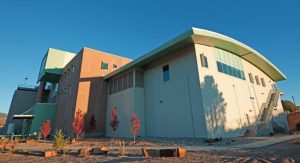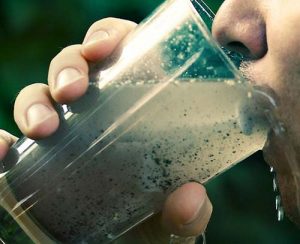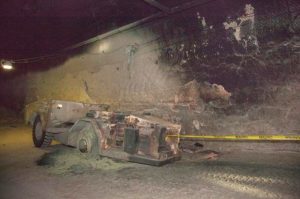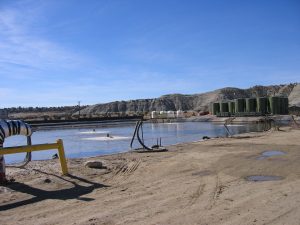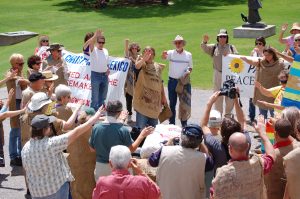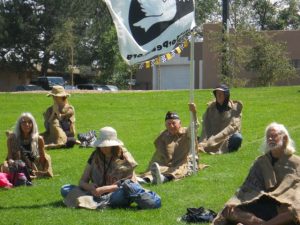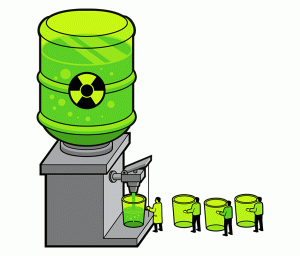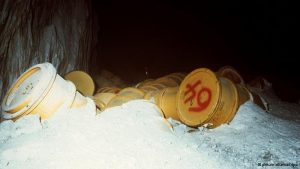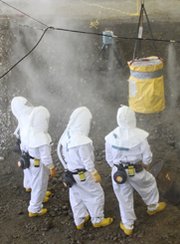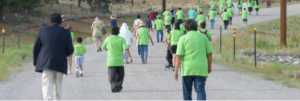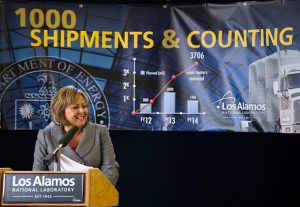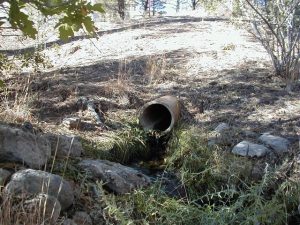![]() A new Government Accountability Office (GAO) report reveals that the Department of Energy (DOE), and its semi-autonomous National Nuclear Security Administration, did not learn the lessons about providing accurate cost estimates for the Chemistry and Metallurgy Research Replacement (CMRR) Project at Los Alamos National Laboratory (LANL). http://www.gao.gov/products/GAO-16-585 In 2005, the federal agencies estimated the CMRR Project to cost $975 million, with a completion date of 2017. http://www.gao.gov/assets/680/678941.pdf, p. 3. Yet recent estimates indicate that design, construction and equipment for the Radiological Laboratory, Office and Utility Building (RLUOB) and the proposed Wal-Mart sized Nuclear Facility would have cost approximately $7 billion, $1 billion more than previously disclosed. http://www.gao.gov/assets/680/678941.pdf, p. 27.
A new Government Accountability Office (GAO) report reveals that the Department of Energy (DOE), and its semi-autonomous National Nuclear Security Administration, did not learn the lessons about providing accurate cost estimates for the Chemistry and Metallurgy Research Replacement (CMRR) Project at Los Alamos National Laboratory (LANL). http://www.gao.gov/products/GAO-16-585 In 2005, the federal agencies estimated the CMRR Project to cost $975 million, with a completion date of 2017. http://www.gao.gov/assets/680/678941.pdf, p. 3. Yet recent estimates indicate that design, construction and equipment for the Radiological Laboratory, Office and Utility Building (RLUOB) and the proposed Wal-Mart sized Nuclear Facility would have cost approximately $7 billion, $1 billion more than previously disclosed. http://www.gao.gov/assets/680/678941.pdf, p. 27.
The report was submitted to the U.S. Senate Committee on Armed Services on August 9, 2016, the 71st commemoration of the U.S. bombing of Nagasaki, Japan.
DOE built the RLUOB at a cost of about $400 million and in 2014, began operations. In August 2014, DOE canceled plans to construct the Nuclear Facility because of the cost increases, including the growing knowledge of the seismic dangers on the Pajarito Plateau, where LANL is located. Robert H. Gilkeson, an independent registered geologist, worked for years to bring attention to the seismic issues. For example, see the Gilkeson and CCNS November 9, 2011 report, Deficiencies in Knowledge of Seismic Hazard for Proposed $6 Billion Chemistry & Metallurgy Research Replacement Nuclear Facility (CMRR-NF) at Los Alamos National Laboratory Need for Field Studies and a New Environmental Impact Statement, with four detailed figures. f CMRR Seismic FS 11-09-11. An estimated $500 million would be needed to make the seismic design changes. http://www.gao.gov/assets/680/678941.pdf p. 4, footnote 9.
LANL is the only facility in the DOE’s nuclear weapons complex for manufacture of plutonium pits, or triggers, for nuclear weapons at the Plutonium Facility, or PF-4. As part of the “modernization” of the nuclear weapons complex and at the direction of the Department of Defense and itself, DOE is charged with manufacturing 50 to 80 pits per year by 2030. http://www.gao.gov/assets/680/678941.pdf, p. 2, footnote 6.
After the Nuclear Facility was canceled, DOE adopted a new plutonium strategy, called the “Revised CMRR Project,” to use PF-4 and the RLUOB for pit production. http://www.gao.gov/assets/680/678941.pdf, beginning on p. 4.
The GAO report discloses that, “[DOE] will develop the capability to produce at Los Alamos an increasing number of new pits over time. These pits will be of a different type than the pits produced earlier, so Los Alamos has started a development process to establish a pit production capability for a new pit type.” http://www.gao.gov/assets/680/678941.pdf, p. 10. In 2013, DOE “developed multiple experimental pits for life extension programs,” a program estimated to cost $13 billion for one warhead, the Interoperable Warhead-1. http://www.gao.gov/assets/680/678941.pdf, p. 10, footnote 21. Soon thereafter, LANL “paused pit production and other operations … because of nuclear criticality safety concerns.” http://www.gao.gov/assets/680/678941.pdf, p. 10, footnote 22.
Jay Coghlan, of Nuclear Watch New Mexico, stated, “Expanded plutonium pit production at LANL is not needed to maintain stockpile safety and reliability, but instead is a must for nuclear weaponeers who want to give existing weapons new military capabilities through so-called Life Extension Programs. This GAO report is more evidence of how taxpayers’ money could be far better spent than on poorly planned, unnecessary and very expensive expanded plutonium pit production.” http://nukewatch.org/pressreleases/NWNM_Pit_Production_PR-8-10-16.pdf

